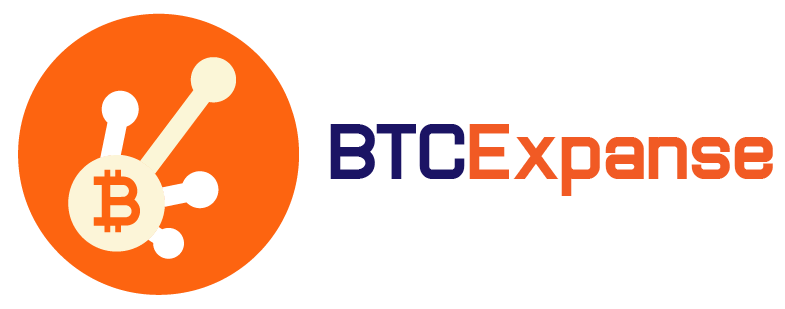Introduction
Decentralized Apps are blockchain versions of different applications. These apps use smart contracts on the Ethereum blockchain to execute different operations. Decentralized Applications or DApps look and work just like regular apps, but have many more features and enhanced security as compared to regular apps which don’t use smart contracts and blockchain technology.
Decentralized Applications usually have finance based applications. For example, you can incorporate these apps in money lending, borrowing, and even in savings. However, in traditional circumstances, these apps and activities are controlled by a central authority, usually a central bank.
Many experts consider DApps and blockchain the future of finance. The loans we take and the repayment system can all be automated with the help of DApps and blockchain, and by making them decentralized.
The History of Decentralized Applications
You might know a lot about Bitcoin and cryptocurrency, but this technology has grown past the point where it was only considered as an alternative to traditional fiat money.
Ever since the invention of Ethereum in 2013, the whole world entered a new era of blockchain technology where everything related to finance can be decentralized.
With the help of blockchain backing the internet, users can take control of everything back from large corporations.
Smart contracts on the Ethereum blockchain is what we all need in order to achieve true decentralization in the world of internet and finance. No one can mute a smart contract once it is made and implemented on the blockchain.
All the rules and limitations of a contract are written in these smart contracts. This provides every party with the choice of making a transaction without involving any third parties.
In 2014, various authors with experience in the blockchain industry wrote a report on the theory of DApps. This report defined Decentralized Applications.
Here are some points about DApps as mentioned in the report.
It is required that every decentralized application is made with open source code. These apps must not have any centralized authority controlling everything, and should be controlled by users who can independently vote for various changes in these applications which will be automatically implemented.
Are decentralized application must have either proof of work or proof of stake consensus mechanism built into it. The consensus mechanism of decentralized applications is used to make tokens.
Every decentralized application must have a specific token to let other people join the platform. The application must also reward the contributors with the same token. The contributors can either be stakers or miners.
All of the information collected by the decentralized application must be stored in a blockchain which is public. The application must also be completely decentralized to avoid providing the hackers with single point of attack.
Based on how people use DApps, where can be three types of these applications.
The DApps which exist on their own on the blockchain are called Layer One DApps. Bitcoin is an example of layer one decentralized applications. These applications must have a consensus mechanism, and should also have specific rules built into them.
The decentralized applications which exist on top of layer one applications are called Layer Two DApps. These applications are built to use the power hidden in layer one applications. Tokens are generated by these applications, and are used for specific interactions.
For example, are developer can use the Ethereum blockchain in order to scale it. In this type of application, the transactions are scanned on the second layer in order to take most of the load off from the first layer.
Layer Three DApps are used to combine layer one and layer two, and hold the data which is necessary to do the same. This layer can hold APIs and scripts to enable both of the first layers to cooperate. One layer Three DApp can house multiple layer two DApps, and help enhance the user experience.
So, in short, DApps are applications which are backed by blockchain in the core. Some apps might use these applications as their core to build on top of them, but if the application meets the criteria of becoming a dcentralized application, it will be considered a DApp.
Importance of DApps
There are lots of benefits which decentralized applications provide over the apps which are run by centralized authorities. One of the major reasons why decentralized applications are so popular is because there is no third party involved in any transaction.
This is all possible because of smart contracts. For example, whenever a person has to transfer their money from one bank to the other, they have to pay a fee, and the money takes some time to arrive in the other account.
On the other hand, whenever you send money with the help of a decentralized application, there are almost no transaction costs involved, and the transaction takes place instantly as well. The fact that these transactions are free and instant saves you a lot of time and money.
Decentralized applications do not rely on servers like centralized applications to run properly. One of the biggest advantages of DApps is that they cannot be attacked by any hacker as they do not rely on physical servers. This makes these applications perfectly secure, and there is no downtime either. Anyone can sign up with these applications without any restrictions.
Decentralized applications can be custom made for any industry like gaming, banking, file storage and even for governance. However, there is not much difference between the looks and working of a decentralized application from a regular app.
It is the backend in decentralized applications that is very different and provides users with all the benefits. This method of running the apps and decentralizing the whole data collection and processing process is called web 3.0.
When the internet started, it has loads of data with easy access for anyone who wanted to use it. However, as large scale organizations started using internet, they centralized it.
No, whenever we use internet, we are giving away our data to these organizations for free, which can use it for any purposes. These companies can even sell our data for huge profits.
Once a company has your data, they can trace your daily activity, know how much money you have, and learn more about your friends circle. They can take everything away from you anytime. However, everything is changed when it comes to Web 3.0. This version of internet does not steal your data while you are using it.
When you are using Web 3.0, you can choose to share only specific data with a specific person for a limited amount of time. For example, when you have to apply for a loan, you will be able to share only your financial information with the concerned company.
Moreover, many companies might start paying people for access to their data in order to encourage them to share their data with them. This will solve the problem of data breaches and illegal data sales once and for all. The internet will become trustable once again.
Benefits and Drawbacks of Decentralized Applications (DApps)
Like everything else, decentralized applications have their own benefits and drawbacks as well. Let’s first discuss the benefits of decentralized applications.
Benefits
Developers find it very easy to take the template from a blockchain and develop a decentralized application. The algorithm used in the consensus of these applications is very complex. The complexity of their algorithm is the key reason behind their immunity from hacking attempts.
So, in a nutshell, decentralized applications are extremely easy for developers to make, but almost impossible for hackers to breach.
Decentralized applications ensure decentralization by copying and distributing data across various devices. This way, whenever a single data point is hacked by a hacker, they won’t be able to change the data stored on the main blockchain since the consensus is reached after taking the data on every node.
So, no one is able to get access to the critical data no matter how advanced they might get.
Some decentralized applications are designed to help different companies connect with one another. In the case of centralized applications, the central authority will hold the power behind every business transaction, and everyone will have to trust them.
On the other hand, decentralized applications do not face such problems as every entity can independently use the application without worrying about any central authority. Since no one has to trust the other person to trust the application, the adoptability rate of DApps is very high.
The code used to develop every decentralized application is open source. Anyone can download the source code of a decentralized application, and can even make their own application out of it.
Since decentralized applications do not need to be attached to a single physical server, they are more flexible, and have way lower down time. This is why whenever you use a decentralized application, you can rest assured that your customers will enjoy the best experience without having to face unexpected down times.
This is also the primary reason why businesses around the globe have started to use DApps in their applications. These apps ensure best business continuity and minimum down time.
In the case of centralized applications, while the laws might differ from one country to the other, these applications can independently collect your data, and some might ask for your permission before collecting it.
In some cases, the user have to get permission from the application in order to access their own data. On the other hand, since decentralized applications use a public ledger to store all the information, it is never hidden from the public eye, and no one can change it either.
Once the data is collected and stored on the blockchain, it is publicly available, and no one can change it either. This means changing any type of data or information on decentralized applications almost impossible.
Since decentralized applications can be used to make rapid transactions, this translates to lower transaction costs.
This is in contrast to centralized applications like banking apps which have to hire lots of staff members in order to maintain the application and allow each and every transaction manually, adding to the overall costs.
Decentralized applications can also not be blocked by external authorities. That is because they are not hosted by a specific IP address, and are hosted on different nodes. This is the main reason why these applications can also be used for potential money laundering.
Drawbacks
Here are some of the most notable disadvantages of decentralized applications or DApps.
Creating a decentralized application is very tough since the infrastructure is very complex. Moreover, maintaining this infrastructure and updating a decentralized application is more difficult.
That is because every node on the network is independent, and every person needs to update their software in order for the decentralized application to be fully updated.
Lack of user experience is another big drawback of these apps. Since these applications are yet to attract the attention of big developers, they still lack user experience like centralized applications.
For example, because of the decentralized nature of these apps, instead of using a Gmail ID and a password, you will have to use a public and private key in order to log into a DApp.
Because of the lack of scalability and increased use of these applications, DApps can usually be very slow, and the transactions can also take a lot of time to process. This is the main reason why bigger corporations are still using centralized applications despite knowing that they collect a lot of data.
Since decentralized applications do not store data in one point, they have no point of failure. This means they are way more secure as compared to centralized apps. If a hacker hacks one server on a centralized application, the whole system will fail.
On the other hand, decentralized applications can only fail when each and every computer on the whole network fails, which is impossible. While this might look like a benefit to you at first, you can’t suffice in this case with normal security.
This means you will have to develop a very specific type of security system in order to keep your decentralized application safe and secure. Developing proprietary technology can come at a huge cost. So, the cost of developing high level security comes at a drawback of using decentralized applications.
Examples Of DApps
Decentralized applications are one of the fastest growing applications of the blockchain technology. These applications use the blockchain ecosystem, and are developed on the same principles.
Let’s take a look at some of the greatest examples of decentralized applications or DApps.
UniSwap
UniSwap was launched in 2018, and is a US based decentralized app made on the Ethereum blockchain. The platform is basically used to trade ERC-20 tokens between different users. When it comes to the ranking of cryptocurrency exchanges around the globe, UniSwap comes at around the 4th biggest of them all.
UniSwap is used by around 200,000 people, and the daily trade volume is $2.5 billion. UniSwap has its own unique process of creating liquidity which allows it to become independent from buyers and sellers.
All you have to do is connect a crypto wallet with the application, and you will be good to go. You have to pay a 0.3% fees per transaction in order to use the exchange. This is counted as the Ethereum gas fees.
1inch
At the start, 1inch was an Ethereum based blockchain, but it has now grown way past that. It allows uses from multiple networks to exchange cryptocurrency with one another. It uses the liquidity of other exchanges based on other blockchains, and provides its users with the unique ability to leverage the liquidity of those exchanges.
People who trade huge quantities of cryptocurrency usually prefer 1inch for the best prices and impeccable security. The exchange also has some of the most developed trading tools available on the market.
If you want, you can also use 1inch, the native token off this exchange in order to reduce the gas fees in every transaction. This also makes your trading experience much smoother as you do not have to mess with Ethereum.
Upland
Third application on the list is not an exchange, but is a decentralized game. This game combines both the metaverse and the real world for optimum gaming experience. Upland was launched in 2019, and it has been rising in popularity eversince.
The game allows you to trade real estate assets virtually. These properties are same as their real world alternatives, but are backed by blockchain in the game. Since the game is based on the blockchain technology, it allows users to earn money by playing. You can sell your assets inside the game in exchange for real money.
You can download the game on iOS and Android game stores. You do not even need to connect a crypto wallet with the game in order to start playing and earning money.






























